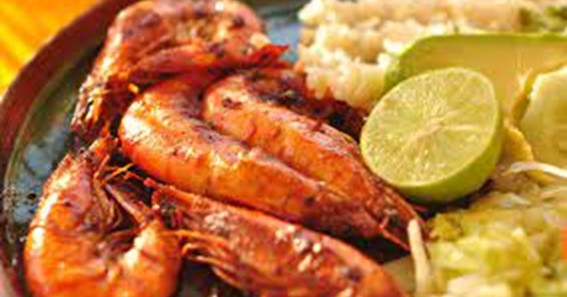Are you curious to know what is CMC in shrimp? You have come to the right place as I am going to tell you everything about CMC in shrimp in a very simple explanation. Without further discussion let’s begin to know what is CMC in shrimp?
What Is CMC In Shrimp?
Shrimp is a popular seafood delicacy enjoyed by many people worldwide. In the food industry, various additives are used to improve the texture, flavor, and overall quality of shrimp products. One such additive is CMC (Carboxymethyl Cellulose). In this blog post, we will explore what CMC is in shrimp, its significance, and its applications in enhancing the texture and stability of shrimp-based products. Let’s dive into the world of CMC and its role in the shrimp industry.
What Is CMC?
Carboxymethyl Cellulose (CMC) is a food additive derived from cellulose, a natural polymer found in plant cell walls. It is a water-soluble compound that is commonly used as a thickening, stabilizing, and emulsifying agent in various food products. CMC is widely recognized as safe for consumption and is approved for use in the food industry by regulatory authorities.
The Significance Of CMC In Shrimp Products
-
Texture Enhancement:
CMC plays a crucial role in improving the texture of shrimp-based products. Shrimp has a delicate and often fragile texture that can be easily damaged during processing or cooking. By incorporating CMC, manufacturers can enhance the texture and firmness of shrimp products, providing a more enjoyable eating experience for consumers.
-
Moisture Retention:
Shrimp tends to lose moisture during processing, leading to a loss of juiciness and tenderness. CMC acts as a moisture retention agent, helping shrimp products retain their natural moisture content. This results in juicier and more succulent shrimp products that remain tender even after cooking or processing.
-
Reduced Cooking Loss:
CMC can also reduce cooking loss in shrimp products. During cooking, shrimp tends to lose moisture, which can impact both the flavor and yield of the final product. By incorporating CMC, cooking loss can be minimized, resulting in a higher yield and improved profitability for manufacturers.
Applications Of CMC In Shrimp Products
-
Breaded and Battered Shrimp:
CMC is commonly used in breaded and battered shrimp products. It helps bind the breading or batter to the shrimp, preventing it from falling off during frying or baking. This ensures a uniform and attractive coating, enhancing the overall presentation and appeal of the product.
-
Surimi-based Shrimp Products:
Surimi, a processed seafood product made from minced fish or seafood, is often used as a base for shrimp analogs. CMC is utilized in surimi-based shrimp products to improve the texture, bind the ingredients, and provide a more realistic shrimp-like texture and appearance.
-
Ready-to-Eat Shrimp Salads:
CMC is also utilized in ready-to-eat shrimp salads to enhance the texture and stability of the salad dressing or sauce. It helps prevent the dressing from separating, ensuring a consistent and appealing presentation of the shrimp salad.
Safety Considerations
CMC is considered safe for consumption when used within the approved limits. However, individuals with specific dietary restrictions or allergies should always check the ingredient list and consult with a healthcare professional if needed.
Conclusion:
In the world of shrimp products, CMC plays a significant role in enhancing texture, moisture retention, and stability. As a food additive, it provides benefits such as improved texture, reduced cooking loss, and enhanced visual appeal. By understanding the significance of CMC in shrimp, consumers can appreciate the efforts made to deliver high-quality and enjoyable shrimp-based products.
For more information like this visit Weji
FAQ
Is Carboxymethylcellulose Safe To Eat?
Sodium carboxymethyl cellulose is considered safe for all animal species. Setting a maximum content in complete diets is not considered necessary. The use of sodium carboxymethyl cellulose in animal nutrition is of no concern for consumer safety.
Is CMC Thickener Safe?
It found that both CMC and another emulsifier (polysorbate 80) affected gut bacteria and triggered inflammatory bowel disease symptoms and other changes in the gut, as well as obesity and a set of obesity-related disease risk factors known as metabolic syndrome.
What Is CMC Made Up Of?
CMC is a cellulose derivative and is composed of derivatized glucose joined via β-(1, 4) glycosidic linkages. CMC is formed after cellulose dispersion in alkali followed by treatment with monochloroacetic acid to substitute hydroxyl groups of glucose at positions O-2, O-3, or O-6.
What Is The Difference Between CMC And Xanthan Gum?
The viscosity of a solution containing xanthan gum will be stable at temperatures in the range of 0–100°C and pH values in the range of 1–13. By comparison, solutions containing CMC solutions will be stable at pH values between 4 and 10, but with the highest viscosity and best stability at pH 7–9.
I Have Covered All The Following Queries And Topics In The Above Article
What Is CMC That They R Putting In Shrimp
What Is CMC In The Shrimp
What Is CMC Used In Shrimp
What Is CMC Injected In Shrimp
What Is CMC In Shrimp?
What Is CMC Made Of Injected In Shrimp
What Is CMC In Shrimp
What is CMC made from
What is CMC made from
Is CMC thickener safe
